Span 63 cm / 25 in
Weight 35 g / 1.23 oz
The DINFIA IA-50 Guaraní II is an Argentine utility airplane for 15 passengers. It first flew in 1963. 3 Prototypes and 32 series aircraft were built. The Guaraní II’s wingspan is 19.53 m / 64 ft 1 in, its length 14.86 m / 48 ft 9 in and its max take off weight 7,120 kg / 15,697 lb. Powerplant consists of 2 Turbomeca turboprops with 930 hp each and range is 1,995 km /1,240 miles. The Guaraní II has the distinction of being the first aircraft built in Latin America to cross the Atlantic Ocean.
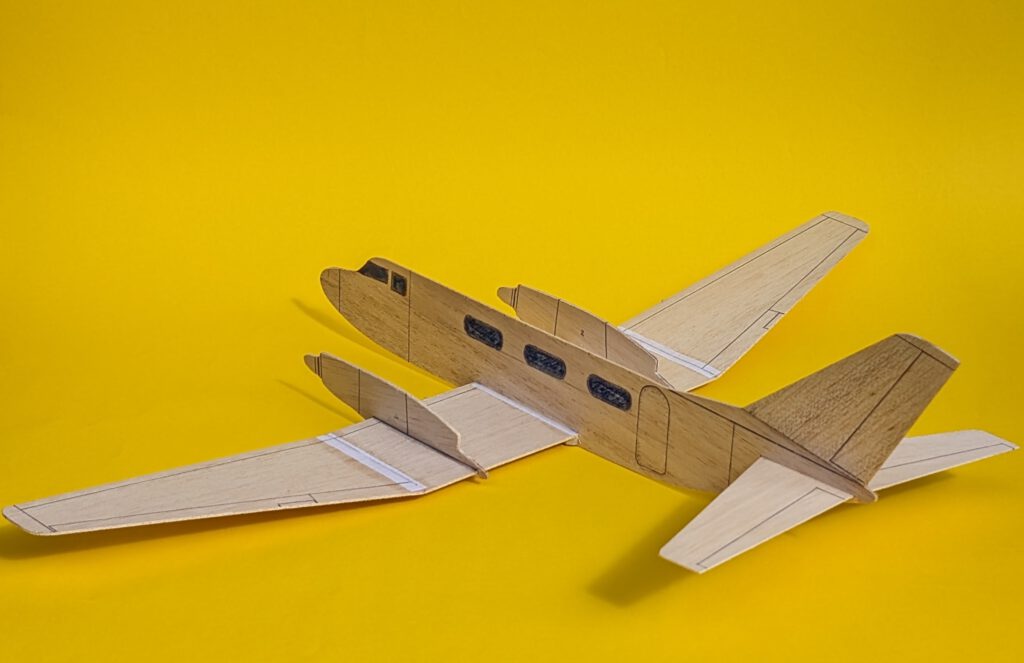
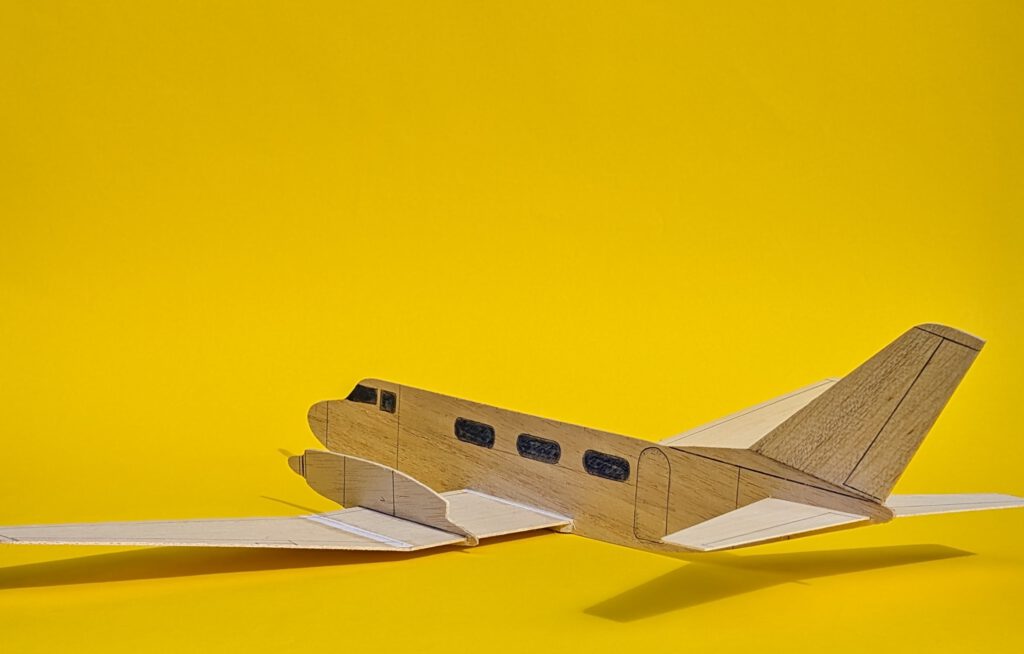
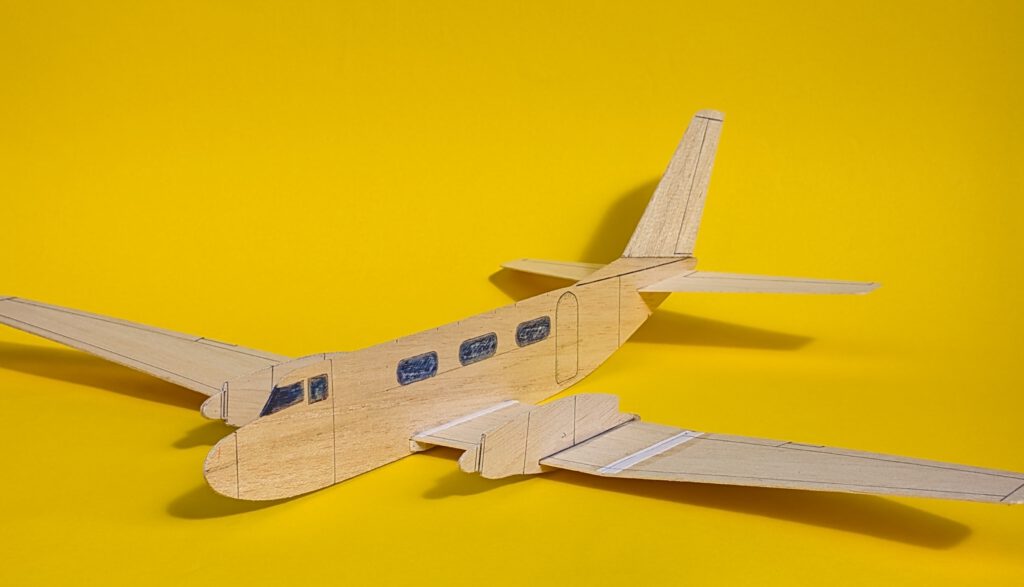
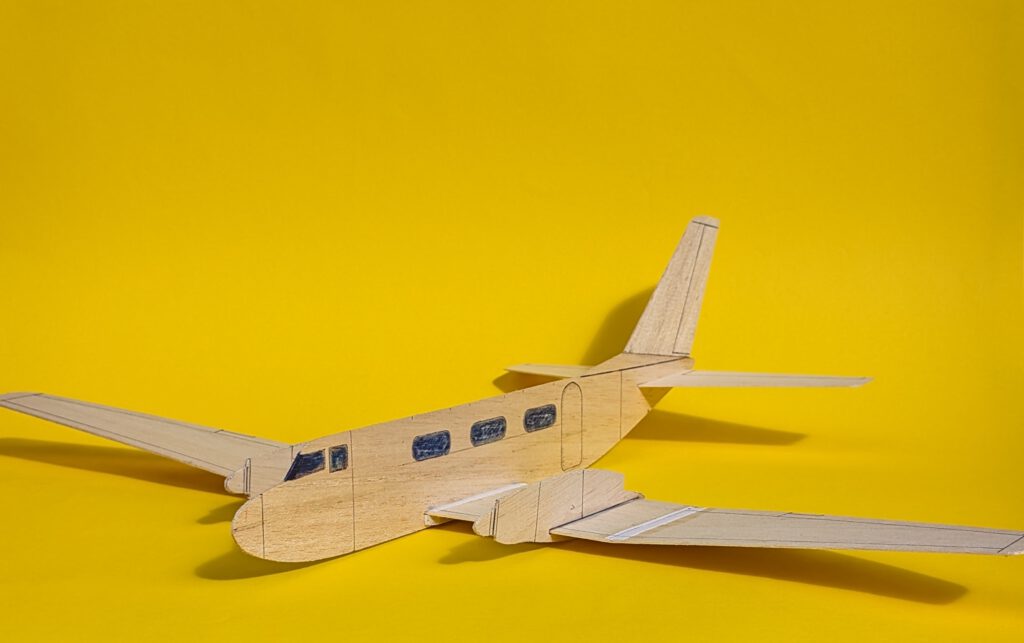


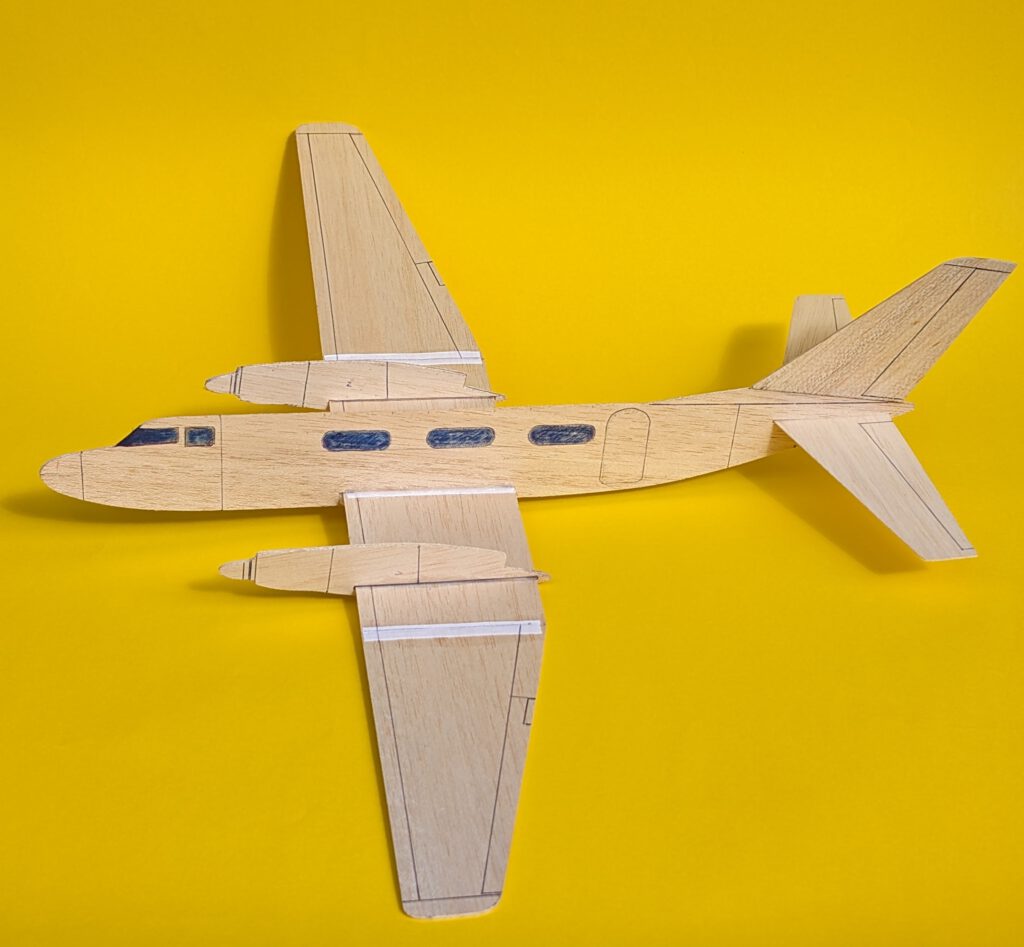
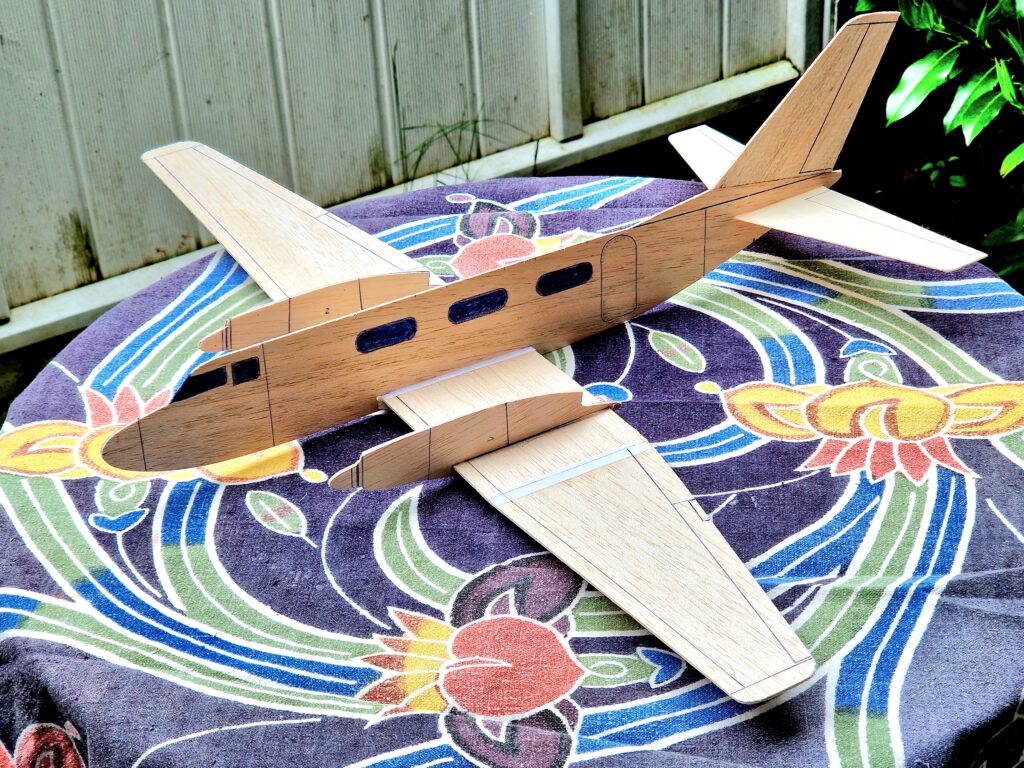
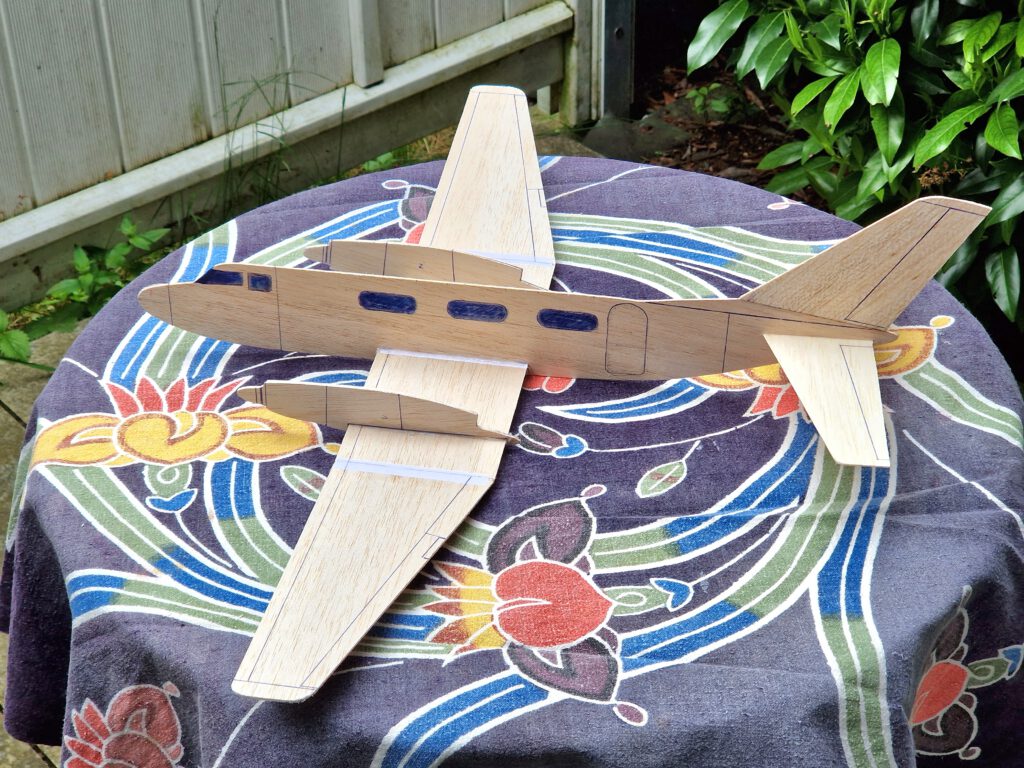
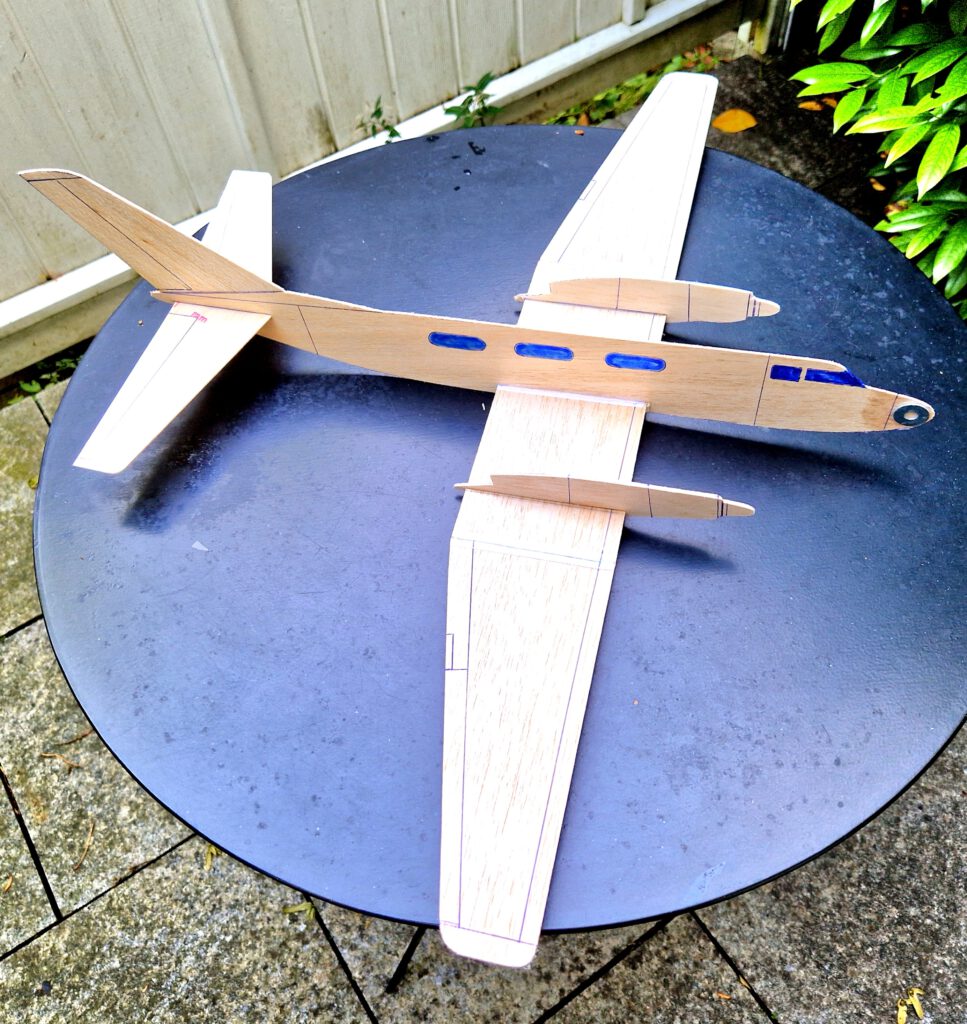
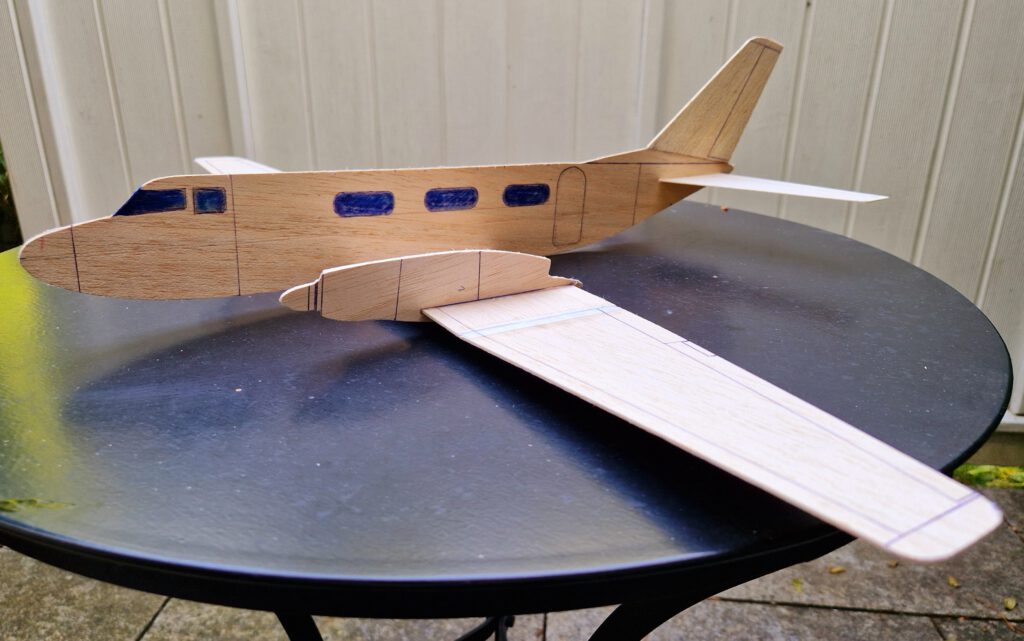
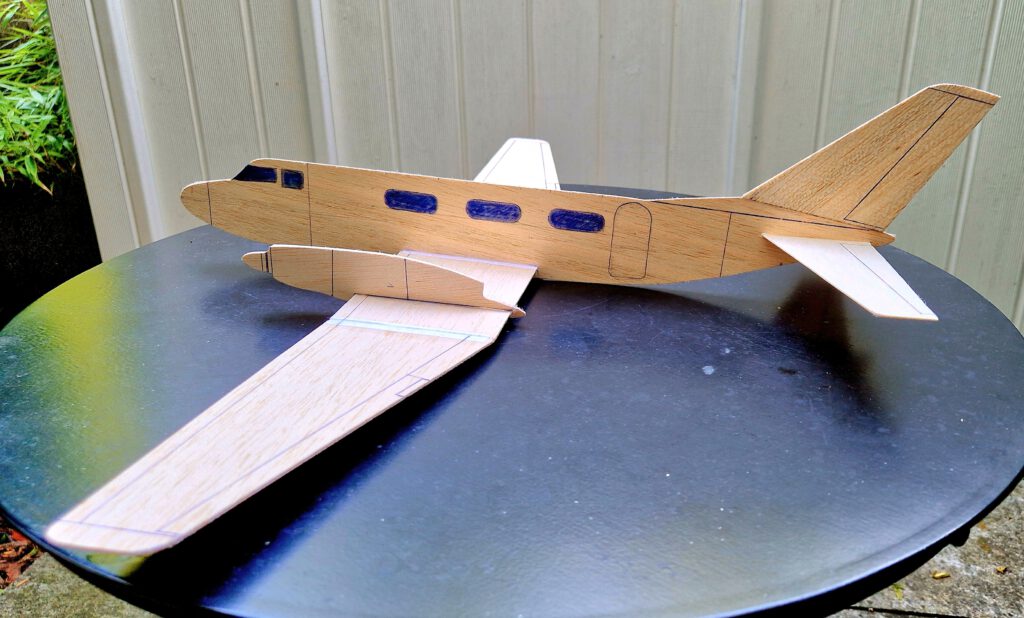
Building the balsa sheet chuck glider IA-50 Guaraní II.
Materials:
Fuselage: hard B 3; fin: hard B 1.5; fuselage stiffener (optional): B 1 or B 1.5; wing supports: B 4 x 4; wings: B 1.5; motorgondolas: B 3; horizontal stabilizer: 1.5 B; linen or cotton band width ½ in; Ballast: small piece of lead or scrap metal.
Assembly:
Cut out all balsa parts. Make slots for wing and horizontal stabilizer into fuselage. Make slots for wing into motorgondolas (photo). Sand well. Transfer outlines of cockpit and side windows, rudders, elevators, flaps etc. from paper to wood with pen (photo).
Fuselage:
Fix fuselage on your building board with needles. Cement fin on fuselage and let dry (photo). Cement wing support strip on right side of fuselage. Use clamps or clothespin. Let dry. Repeat procedure on left side. Let dry.
Empennage:
Fix one half of the horizontal stabilizer on building board with needles and join with other half (photo). Let dry.
Wings:
Note: Wing center section is flat. Outer wing sections must have a certain dihedral.
Fix center section on building board with needles. Join outer sections. Let dry. Linen band should be used to strengthen joining areas. (photo)
Final Assembly:
Put fuselage on so called “third hand”. Let wing slide into fuselage slot. Wing sits now on wing supports. Use needles to hold in place. Check symmetry diligently at this stage. Cement wing on fuselage and let dry.
Mark positions of motorgondolas on wing with pencil.
Slide one Motorgondola on left wing until marked position is reached. Visual check to obtain best possible symmetry. Use needles to hold in place. Cement and let dry. Repeat this procedure on right wing.
Cement horizontal stab into fuselage slot using needles to hold in place. Check symmetry.
Balance model in accordance to given CG on plan.
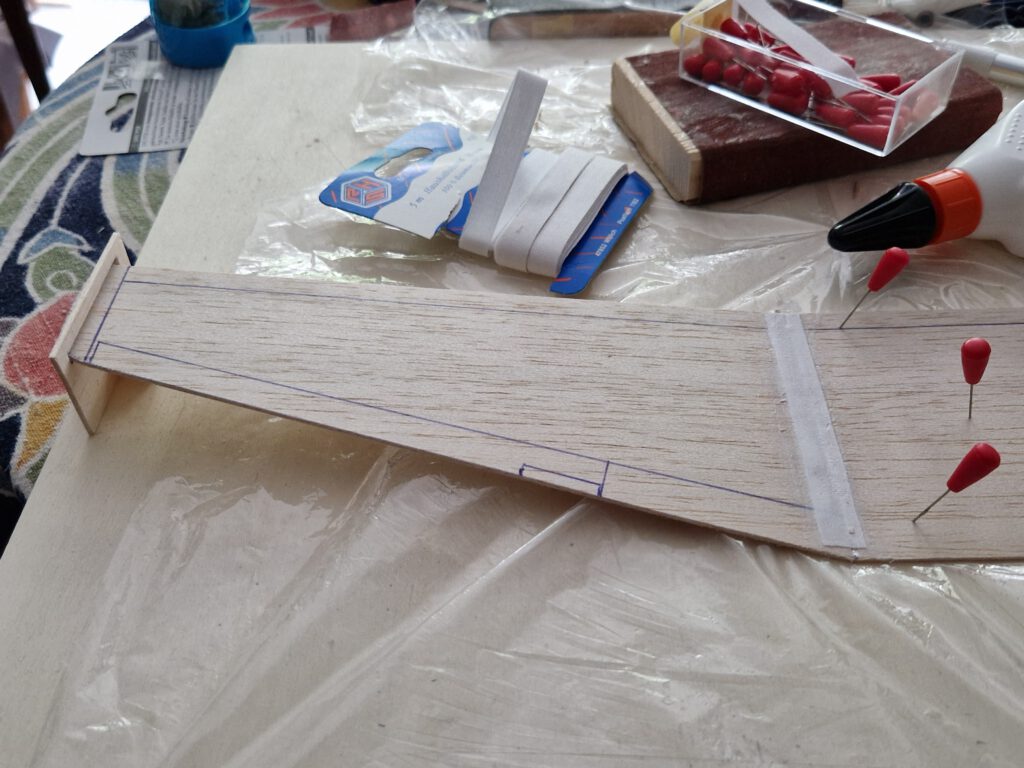
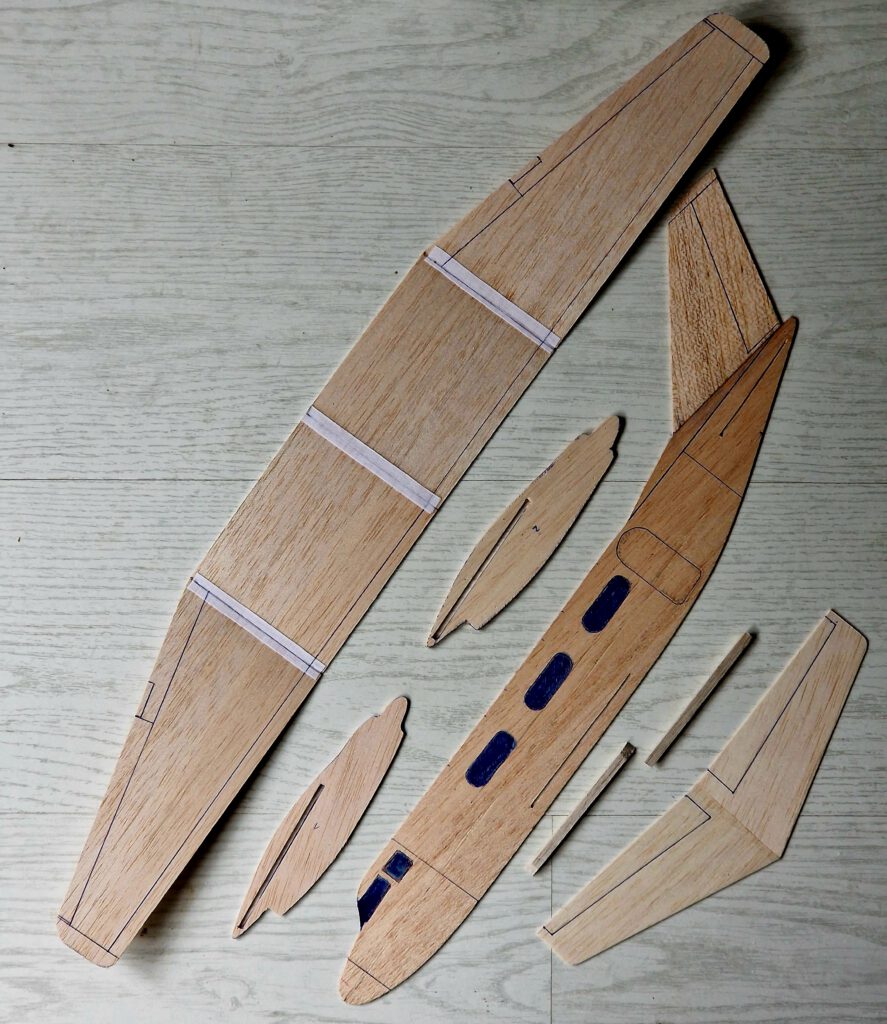
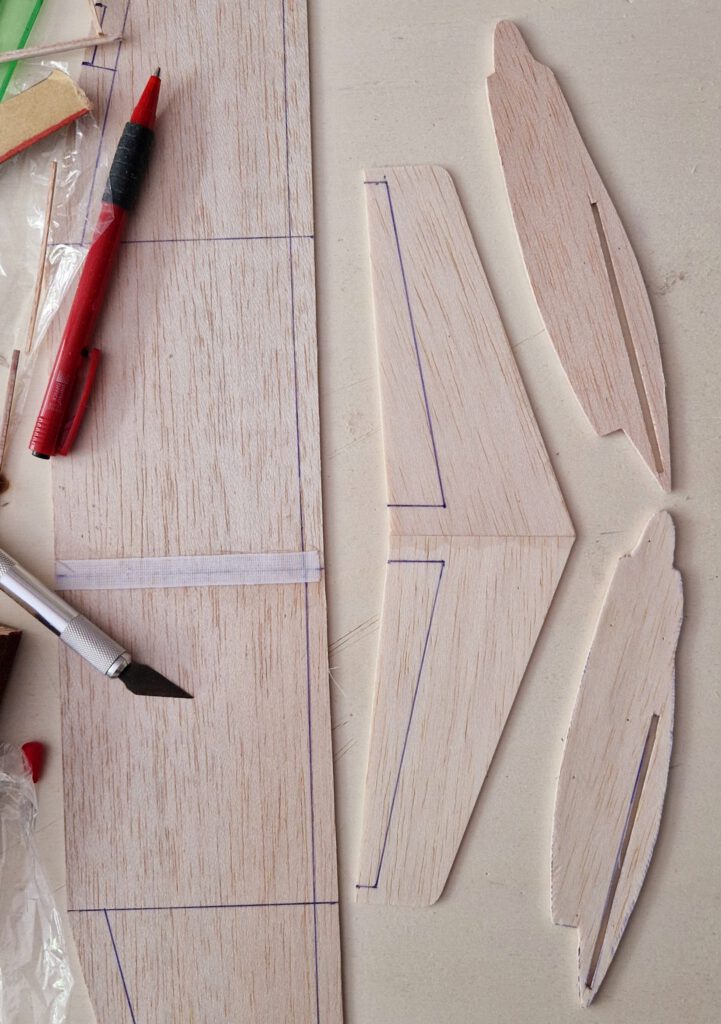
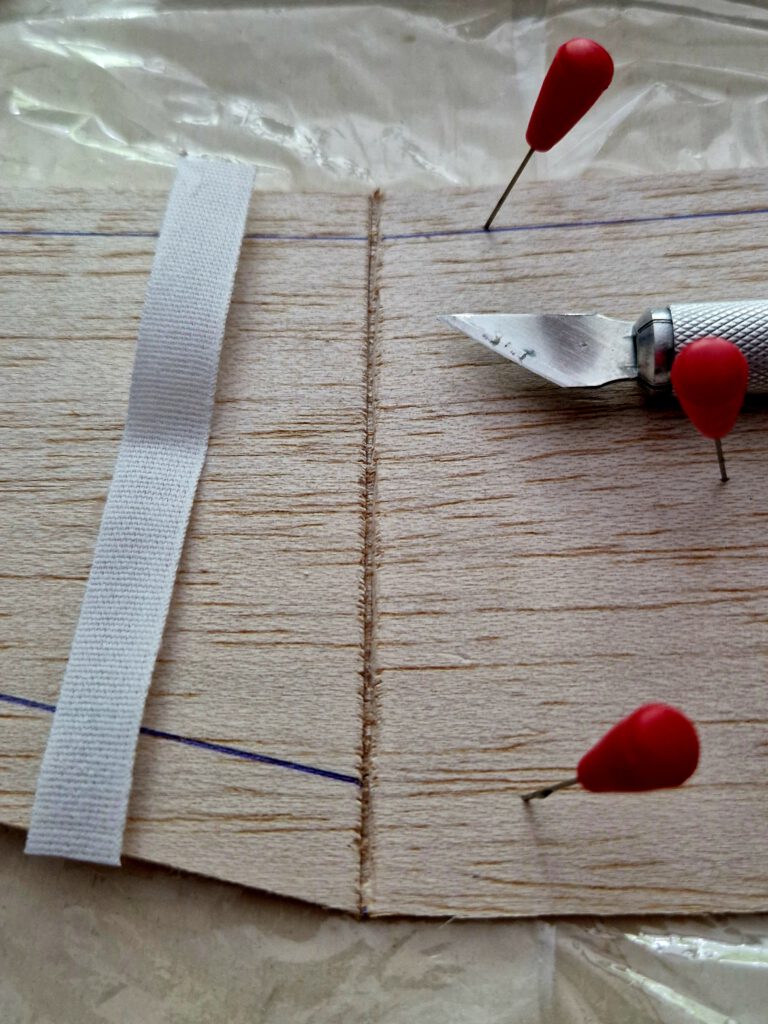
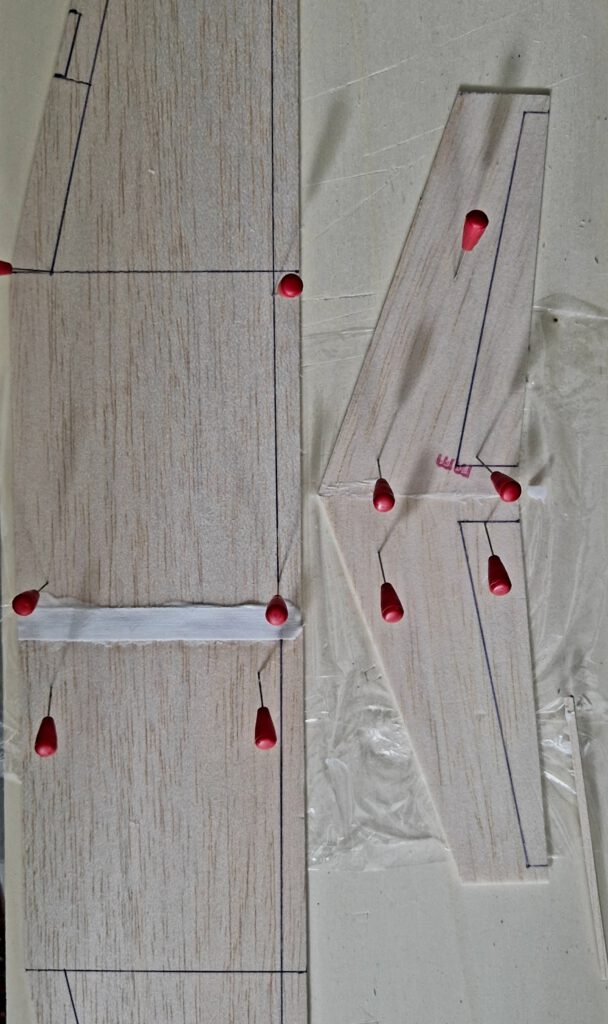
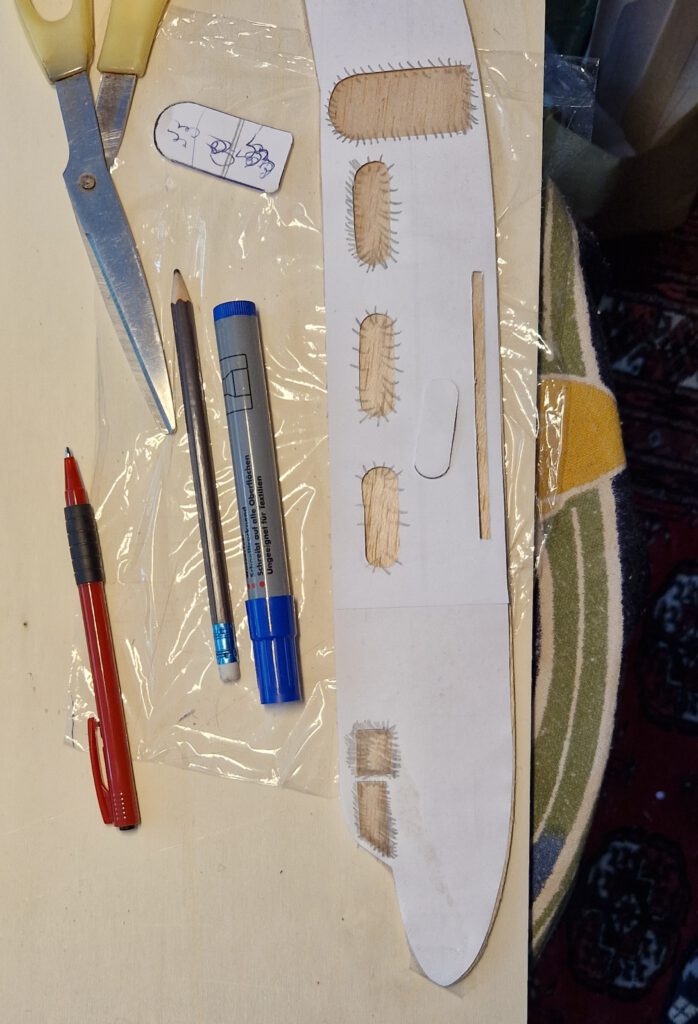
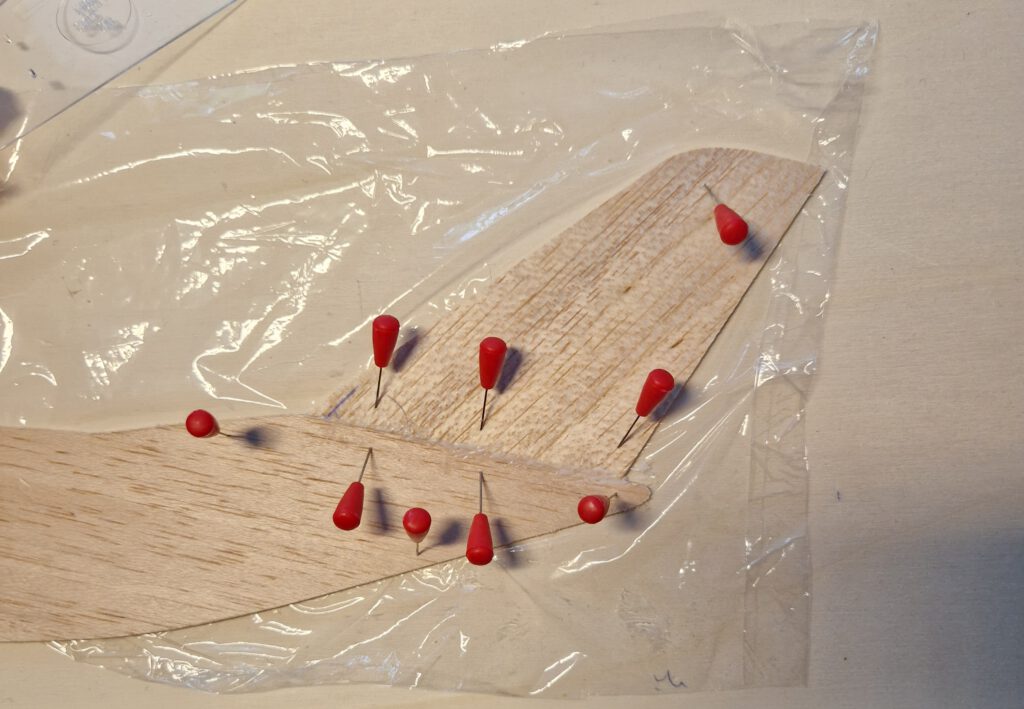
Have a pleasant flight! (гарного польоту!)
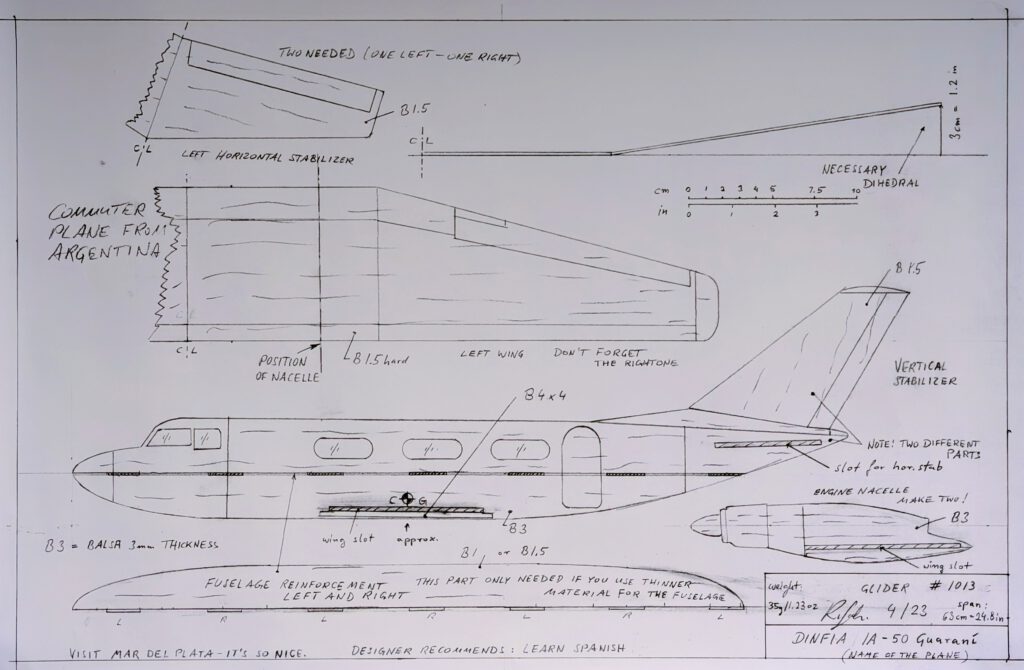
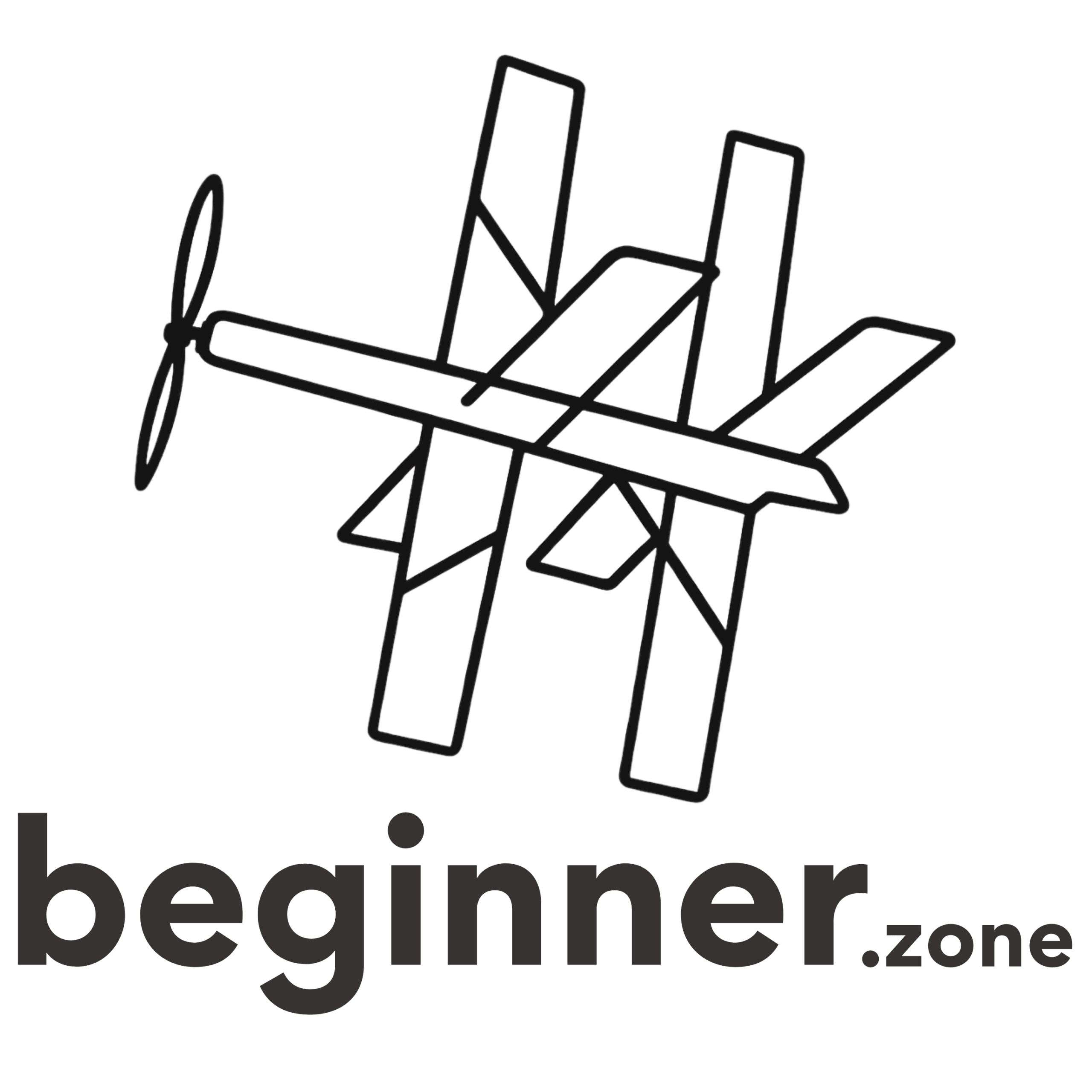
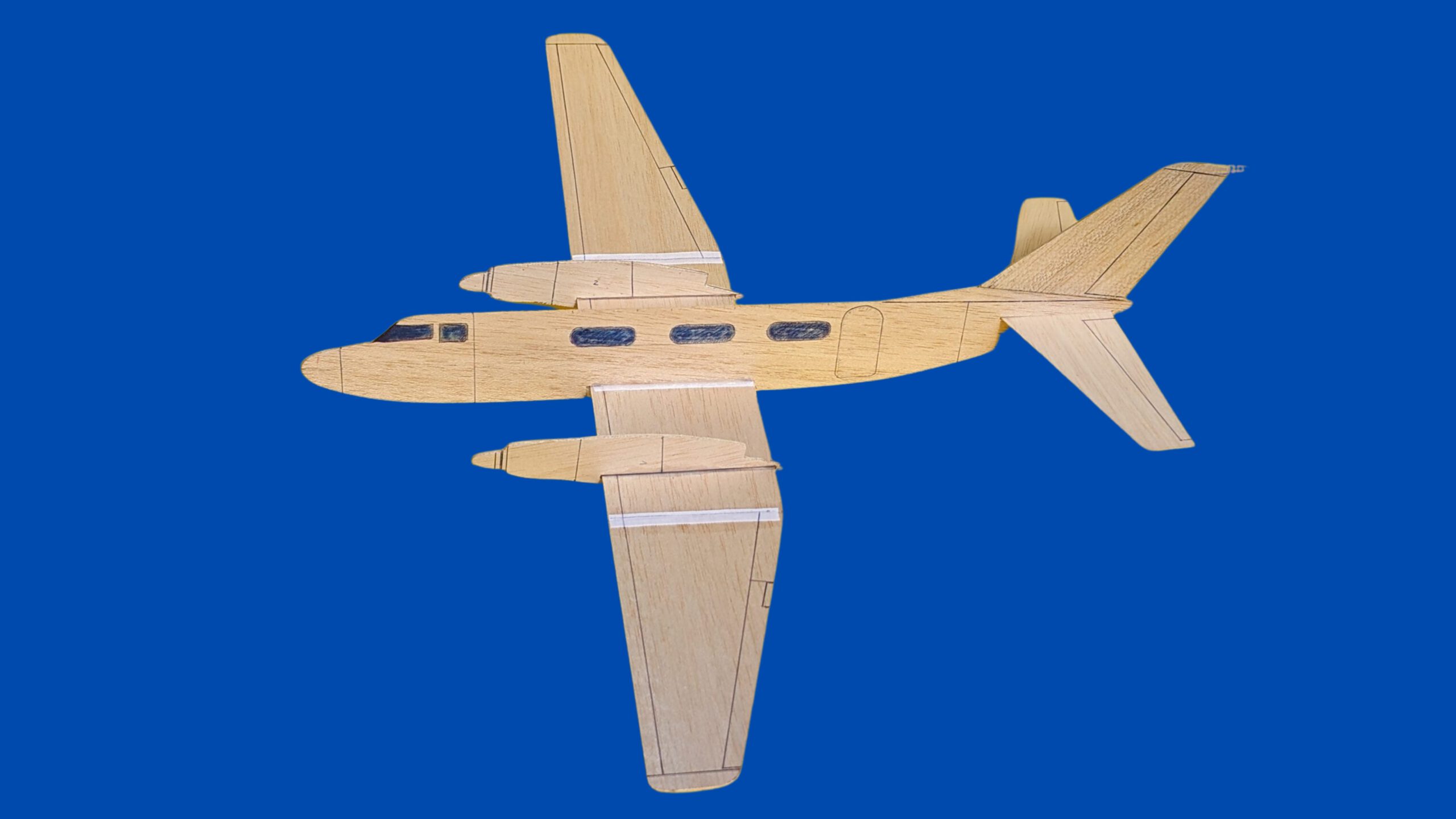
Leave a Reply